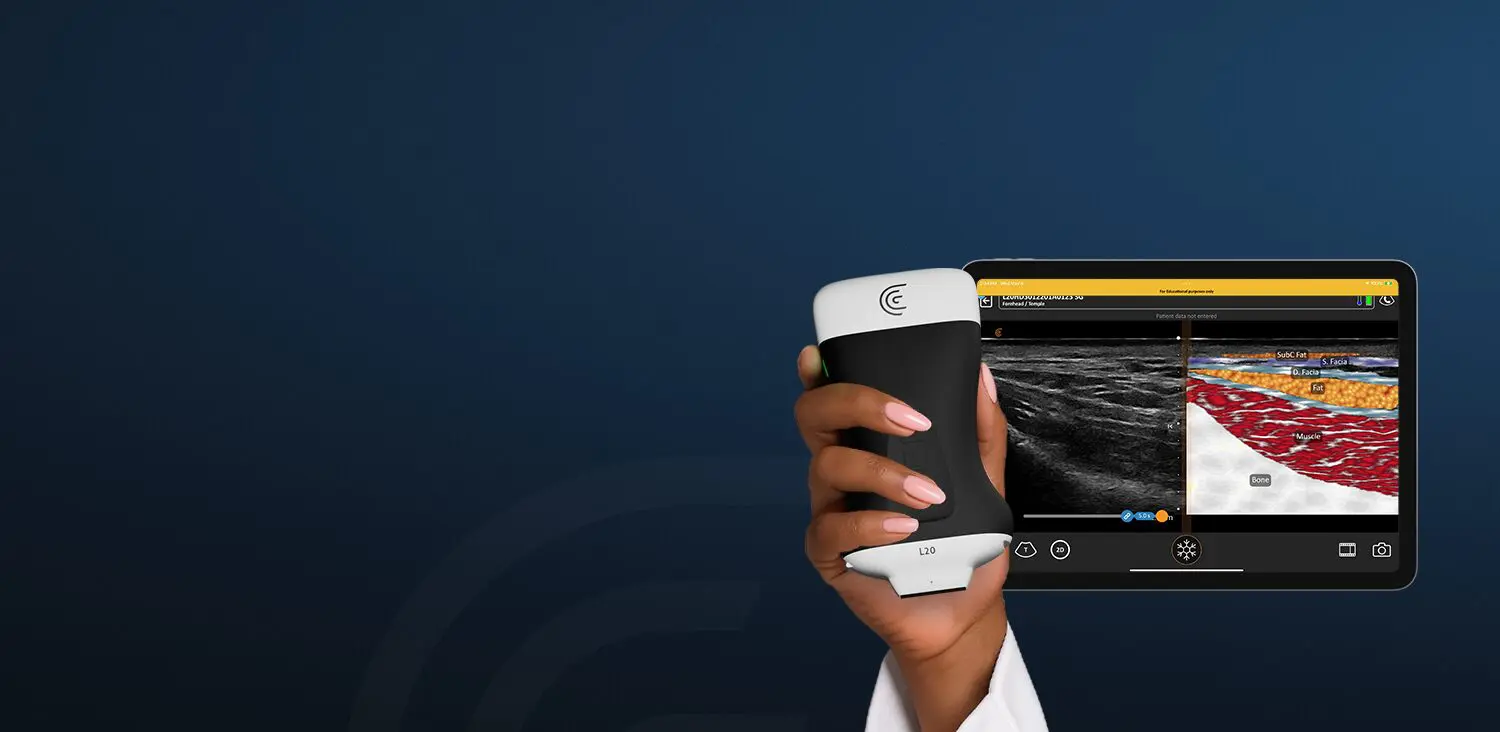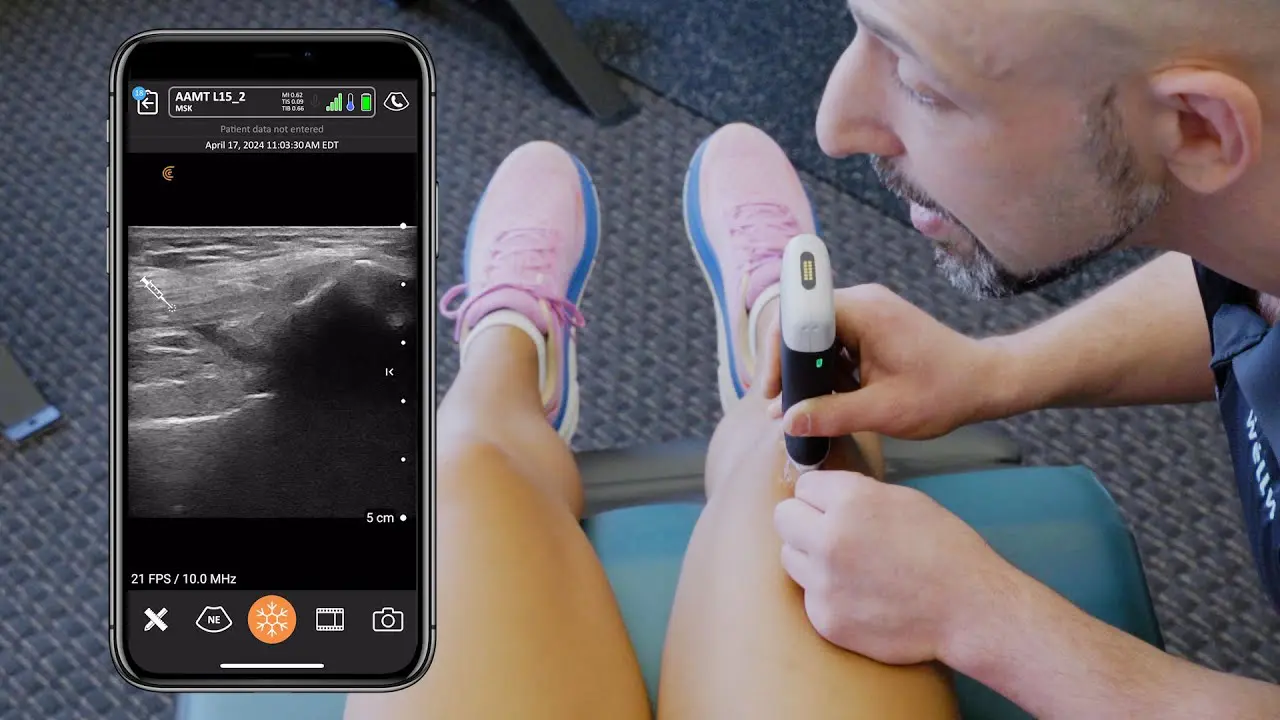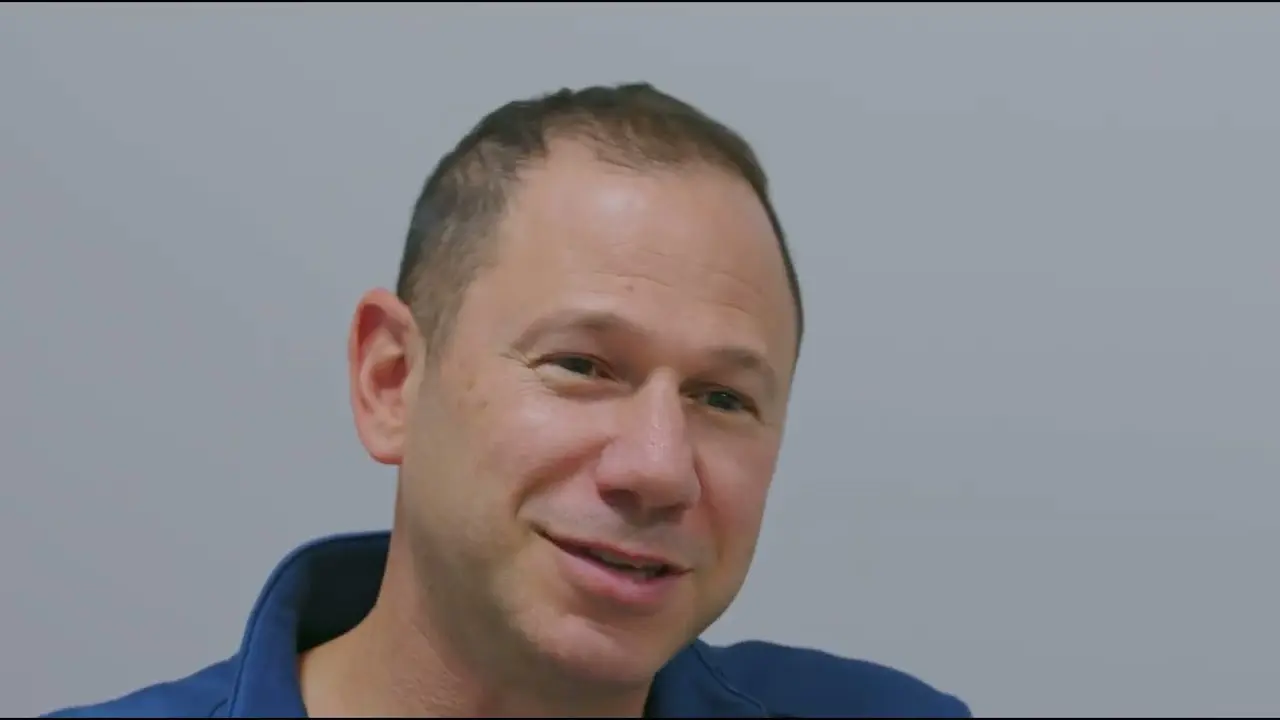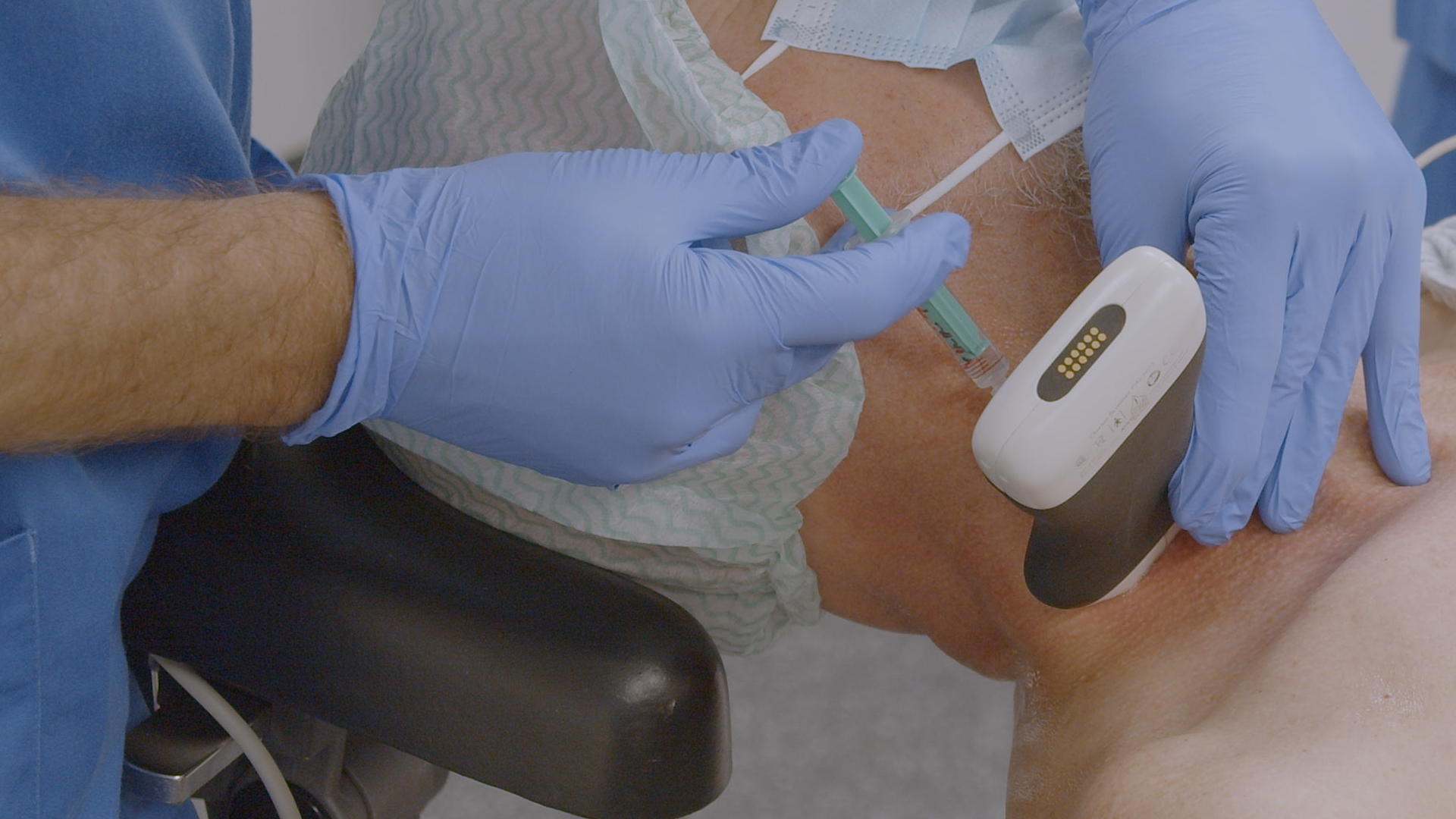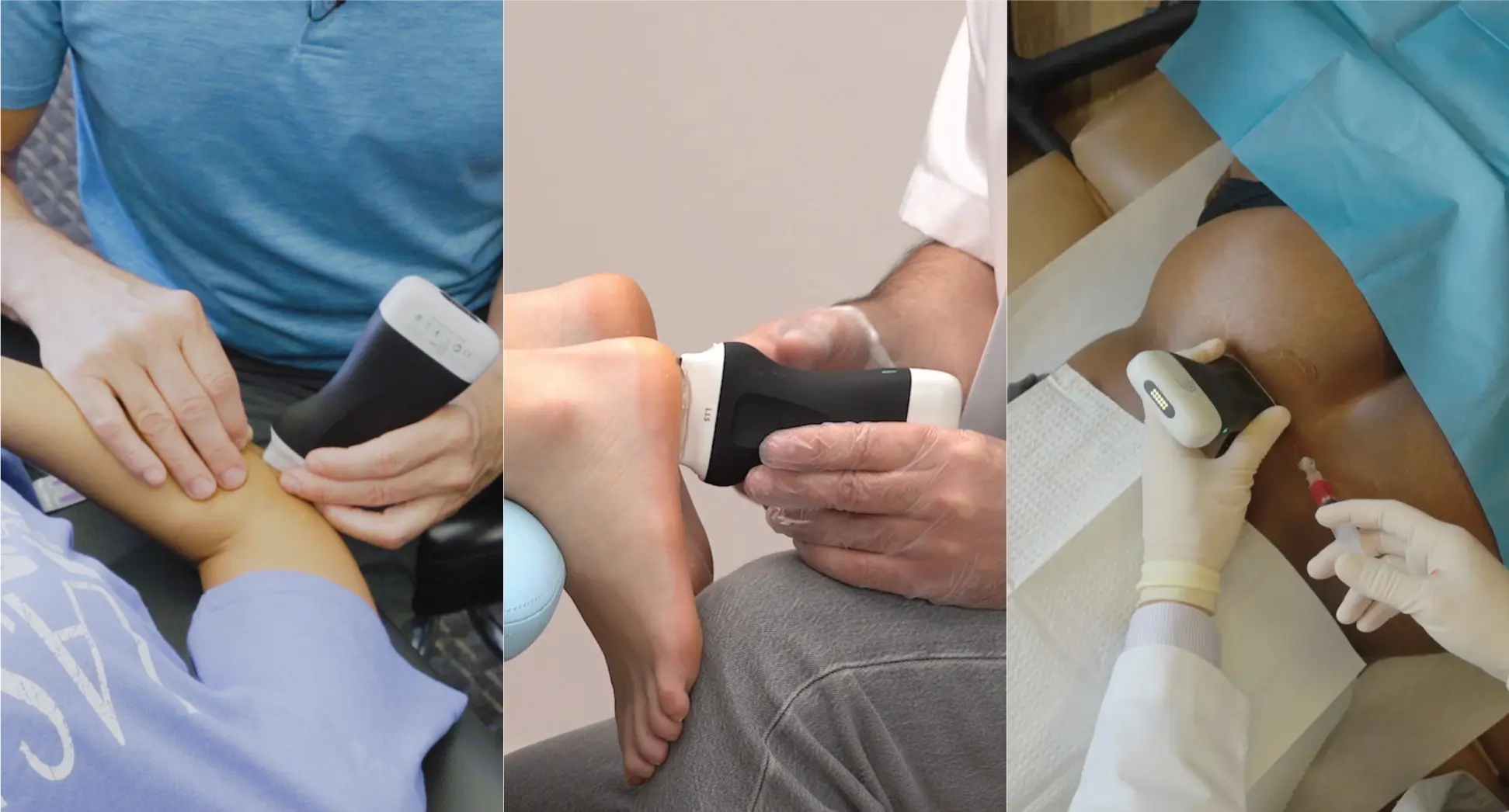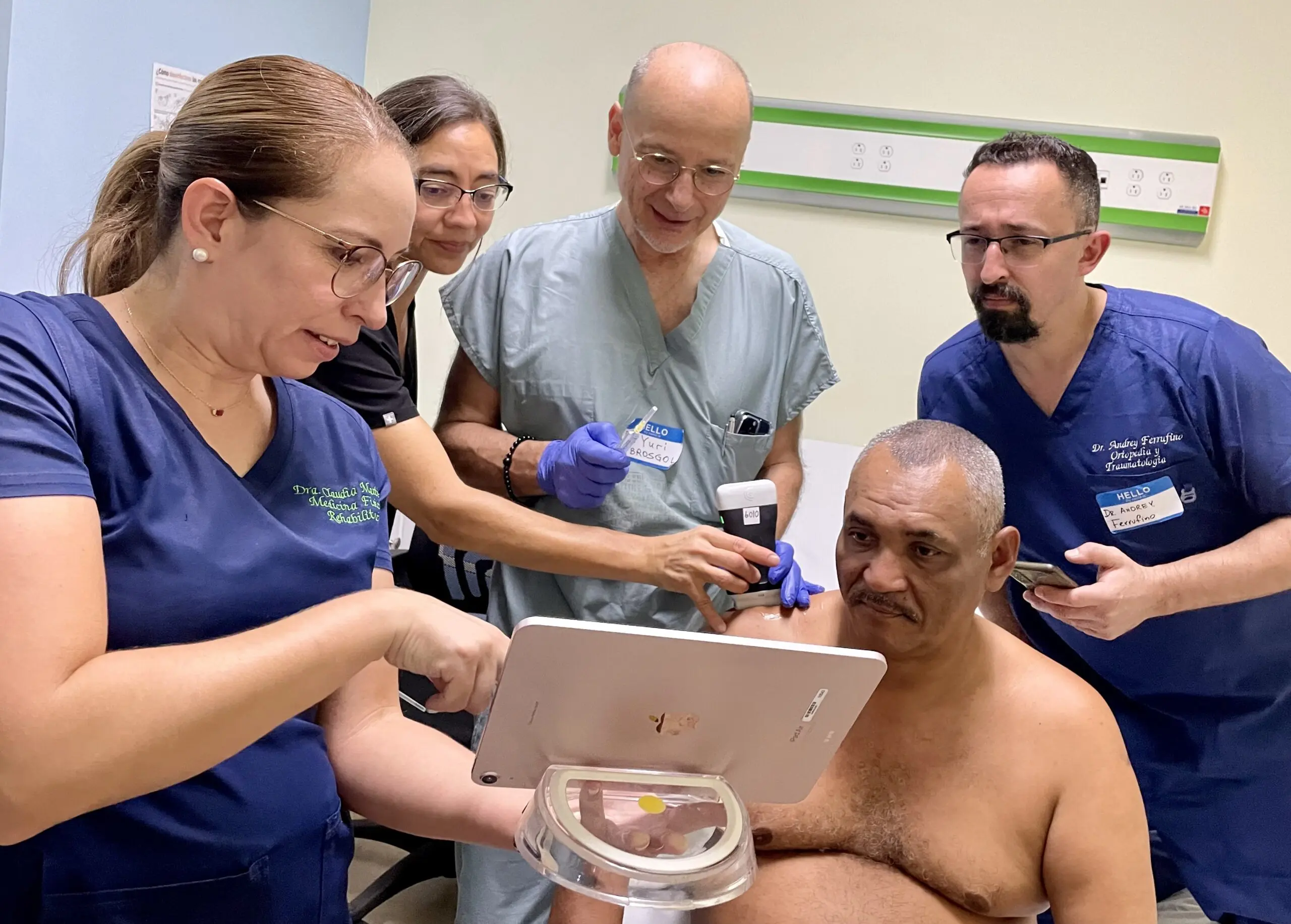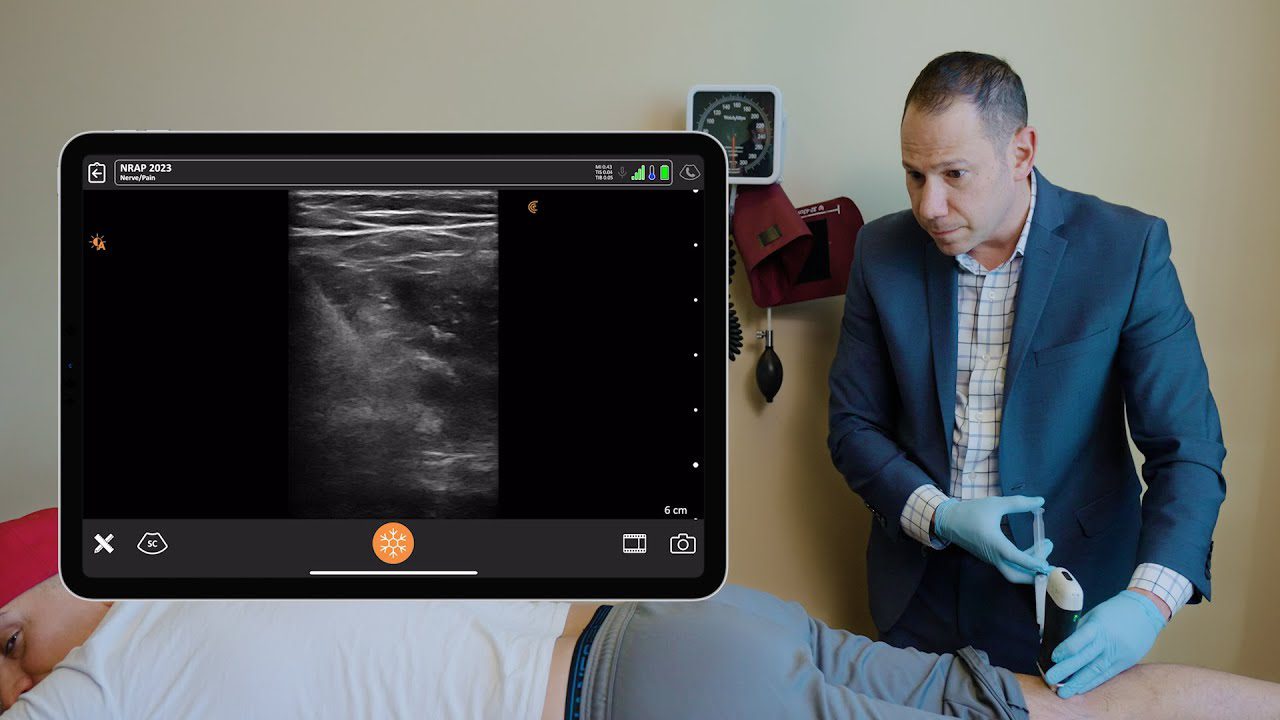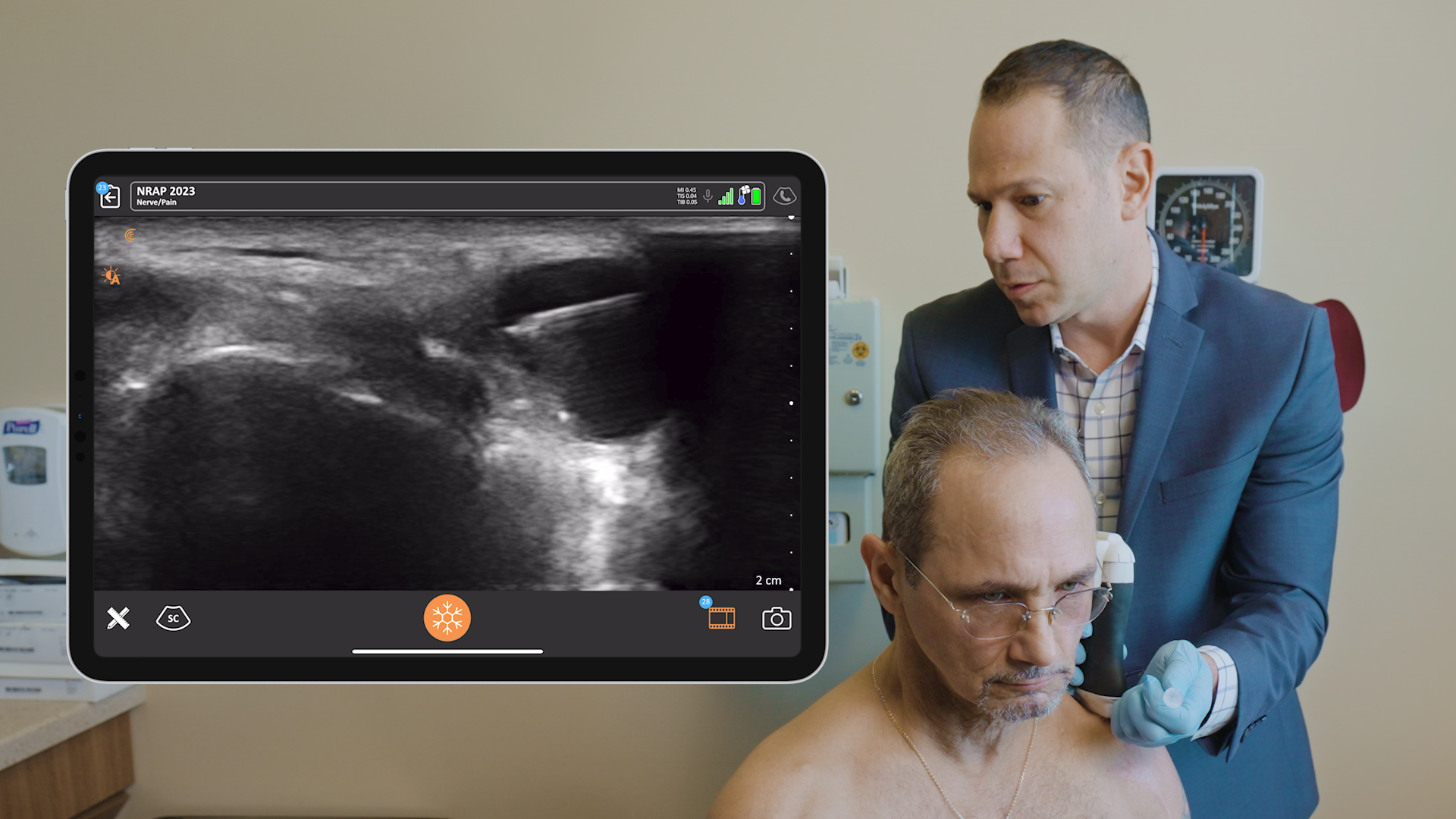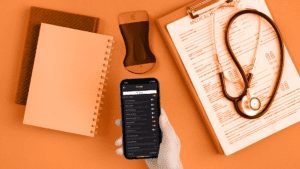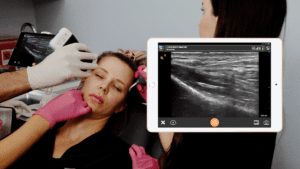When we compiled our very short list of clinicians who would be the first to test our new Clarius HD3 handheld ultrasound systems, there was no doubt that Dr. David Rosenblum would be included. A regional anesthesiologist who specializes in ultrasound-guided pain procedures, Dr. Rosenblum started using ultrasound as a resident and hasn’t stopped since. He is a strong advocate for the use of handheld ultrasound for better patient outcomes and has been an avid supporter of Clarius since he began using the device three years ago.
Handheld ultrasounds are revolutionizing pain management in the sense that they’ve become more affordable and easier to implement in one’s practice,” says Dr. Rosenblum. “You could take the machine from office to office, from room to room. You don’t need to have heavy, expensive equipment or waste time wheeling heavy carts down the hallway to change rooms to do the procedures.”
We recently interviewed Dr. Rosenblum about his experience using Clarius at his pain care practice at Maimonides Medical Center in New York. Watch the video and read below to see what he had to say.
Superior Targeting with Ultrasound-Guided Procedures to Treat Chronic Pain
“I’m part of a multi-physician practice and we focus on treating chronic pain patients. Occasionally we’ll get acute pain patients who present with acute injuries or pain that needs to be controlled. And we usually utilize interventional techniques as well as medications in the hopes to avoid unnecessary opioid medication, as well as unnecessary surgeries.
I specialize in ultrasound and fluoroscopic guided interventional pain procedures. I use ultrasound to perform regenerative medicine procedures such as platelets rich plasma bone marrow aspirate, as well as radiofrequency ablation, cryotherapy ablations, and other nerve blocks and injections.
I use Clarius ultrasound to identify structures and to target injections to a particular tissue. It’s enabling me to see the blood vessels quite clearly as well as the neural structures, the target tissue, and the tissues I hope to avoid like the lung.”
Why Wireless Ultrasound is Replacing Traditional Ultrasound Machines for Pain Management
“When comparing Clarius ultrasound probe to a larger, more traditional ultrasound machine, there’s really a huge difference with respect to flexibility and size. Not having to deal with a big cart or wires connected to a big cart enables me to move around the patient with ease.
I like to do bilateral injections and switch hands in the middle of the procedure. With Clarius, I don’t have to worry about the cord being in my way. Having a wireless system is incredibly helpful when performing multiple injections on the same patient or moving around the room so that you can get to the other side of the patient with ease and not have to worry about getting caught up with a cord.
I also prefer the ability to upload images to the Clarius Cloud, to share them, to edit them, to present them. It makes life a lot easier. In the older days, we used to use the USBs to download, upload, take copies of the images, then find a way to scan them into PowerPoint documents or other presentations. Now it’s seamless.
Handheld ultrasound is the future. It’s cheaper, more portable and has greater flexibility than the traditional ultrasound machines.”
Inspiring Patient Confidence with New Tech
“The Clarius ultrasound gives me a lot of confidence when performing procedures. It also inspires confidence in my patients. My patients see that I’m using a newer piece of tech, not using an archaic machine that some of the other physicians are using and it makes them feel more comfortable because they know I have the best technology to help me treat my patients. They tend to look at what I’m doing as something cutting-edge and high-end.”
First Impressions of the Clarius HD3
“The third generation Clarius is amazing. I mean, it’s light, it’s small and it’s easier to handle when performing a procedure. It connects seamlessly. It’s probably faster than the previous generations and has a great picture with great features, such as the ability to increase, decrease the gain or depth by the push of a button. It is like the size of my cellphone, so I can easily fit it in my pocket
It’s also very intuitive and comfortable to hold. I just press a button to capture a movie or a still shot. It’s going to be very useful when it comes to creating more ultrasound training videos and instructing other doctors on how to do these procedures. I think it’s a great product and I like the design.
When colleagues ask me about the Clarius Ultrasound, I highly recommend the product. I think it’s great. It’s helped to create a high-volume interventional pain practice in which I’m able to do lots of procedures in a safe manner, in a relatively short period of time.”
Watch the New Clarius L7 HD3 in Action for Interventional Pain Management
Thank you, Dr. Rosenblum, for adding to our library of pain management videos on Clarius Classroom. Watch this video tutorial to see how Dr. Rosenblum uses the new Clarius L7 HD3 to guide a procedure on a patient’s shoulder.
Improve Procedural Success with Clarius
If you’re interested in joining our growing community of users, please visit our wireless ultrasound for pain management page to learn more about which Clarius scanner is right for your practice. Or contact us today to book a virtual demo with one of our ultrasound experts.
You’re also invited to watch Dr. Rosenblum’s on-demand webinar “Head to Toe Analgesia: Ultrasound-Guided Subacromial, Cluneal Nerve, Knee, and Tarsal Tunnel Injections.” He dives into 4 real-patient procedures recently captured on video and demonstrates how to perform needle-guided interventions that improve patient safety and procedural success.
